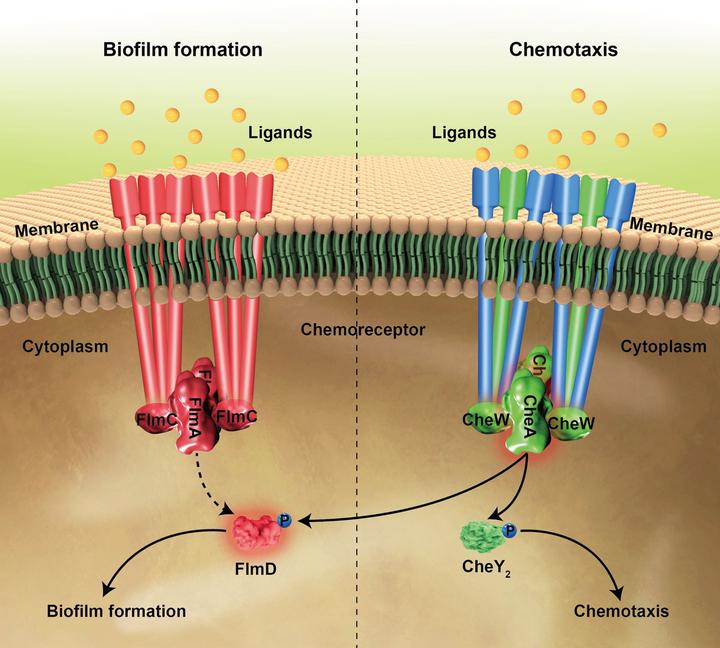Cross talk between chemosensory pathways that modulate chemotaxis and biofilm formation

Abstract
Complex chemosensory systems control multiple biological functions in bacteria, such as chemotaxis, gene regulation, and cell cycle progression. Many species contain more than one chemosensory system per genome, but little is known about their potential interplay. In this study, we reveal cross talk between two chemosensory pathways that modulate chemotaxis and biofilm formation in Comamonas testosteroni. We demonstrate that some chemoreceptors that govern chemotaxis also contribute to biofilm formation and these chemoreceptors can physically interact with components of both pathways. Finally, we show that the chemotaxis histidine kinase CheA can phosphorylate not only its cognate response regulator CheY2 but also one of the response regulators from the pathway mediating biofilm formation, FlmD. The phosphoryl group transfer from CheA to CheY2 is much faster than that from CheA to FlmD, which is consistent with chemotaxis being a fast response and biofilm formation being a much slower developmental process. We propose that cross talk between chemosensory pathways may play a role in coordination of complex behaviors in bacteria.
IMPORTANCE In many bacteria, two or more homologous chemosensory pathways control several cellular functions, such as motility and gene regulation, in response to changes in the cell’s microenvironment. Cross talk between signal transduction systems is poorly understood; while generally it is considered to be undesired, in some instances it might be beneficial for coregulation of complex behaviors. We demonstrate that several receptors from the pathway controlling motility can physically interact with downstream components of the pathway controlling biofilm formation. We further show that a kinase from the pathway controlling motility can also phosphorylate a response regulator from the pathway controlling biofilm formation. We propose that cross talk between two chemosensory pathways might be involved in coordination of two types of cell behavior—chemotaxis and biofilm formation.